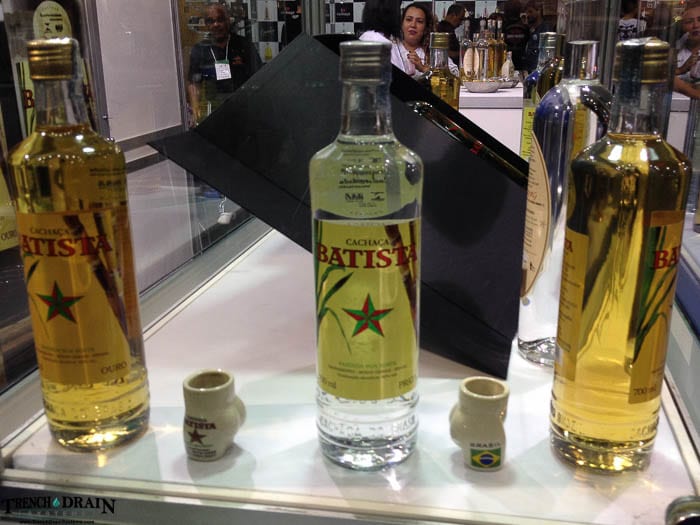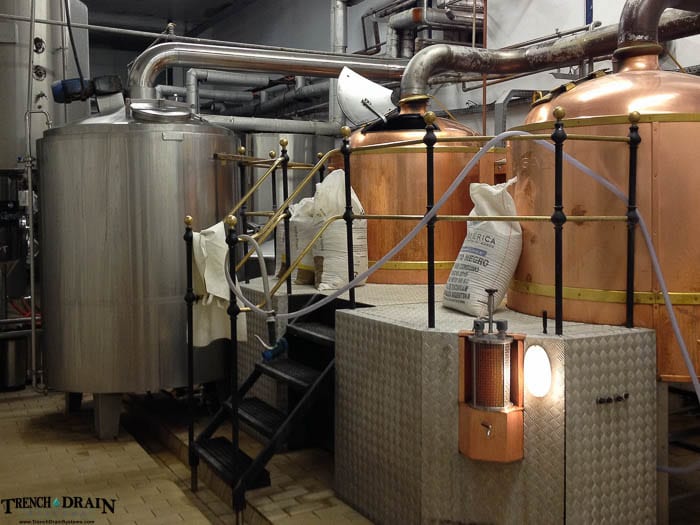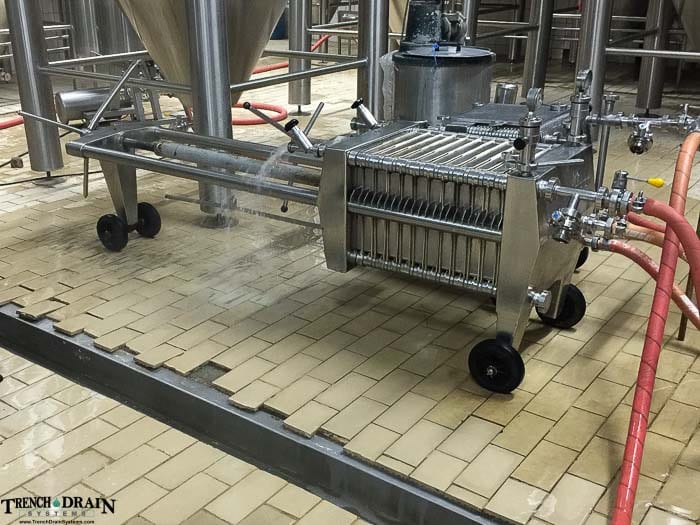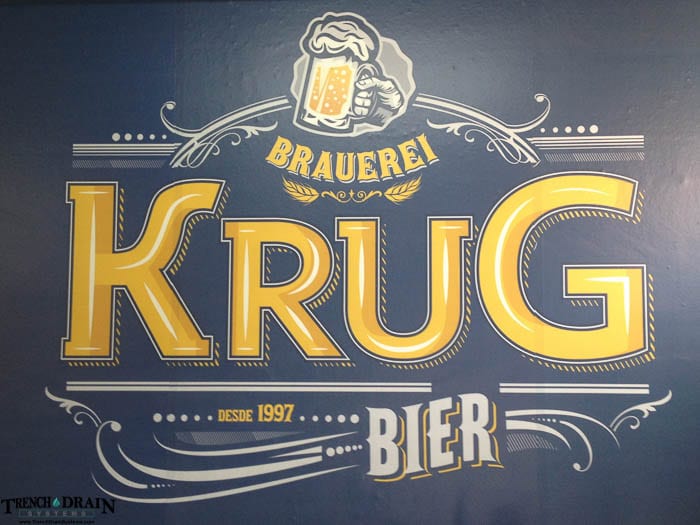I recently visited the mountainous central region of Brazil to attend an exposition of Cachaça in the state capital, Belo Horizonte. I’m interested in the production of this local distilled sugarcane spirit used to make the famous drink, Caprihna. Brazil’s State Minas Gerais, or Minas for short, is world renown for cachaça production, though other Brazilian states have sugarcane production used for making this “firewater.”

The expo brought together a host of equipment manufacturers, bottle and barrel makers, food vendors and local cachaça manufacturers. The expo itself was said to be down in attendance from previous years, due in part to the political and financial crisis of the country. Some of the biggest names in cachaça manufacturing were noticeably missing.
In Your Face
Not missing from the Expo, however, were a host of local craft beer makers. And why not? Cachaça, like other 40% alcohol spirits, isn’t used as a companion drink to food. It is mixed with lime or soda to make a less potent drink. Or, in the case of many others, cachaça is used as a side drink with beer and local snacks foods pretty much the way you would order a pint of Guinness with a side of Jamison whiskey.
Additionally, the distilling equipment used in making cachaça is manufactured by the same folks that make the brewing equipment. This year, one of the manufacturers of this equipment, D&E Inox Group, rolled out its own pilsner beer called Aleluia.

Among the local craft brewers at this event were two of the largest, Bacher and Krug. Each company had more than one beer stand at the event. I was able to meet up with Fernando Figueiredo, one of the Krug Partners, to discuss the new line of “Impressionista” beers that they were showcasing on this day.
Fernando, a.k.a. Gordo, recently merged his craft beer company with the larger Krug Bier. With the merger, he brought a variety of stouts, ales and IPA brews that stand out in a beer market dominated by the beer giant AmBev. Most Brazilian made beers are light pilsners and, in my humble opinion, are indistinguishable between each other. The Krug Impressionist line of craft beers range in alcohol content of 5.2% – 9.0%. These are not beers that you commonly see at a local street corner cervajaria.
First in the neighborhood
 I visited the Krug Brewery the following day and met the founding partner of the company, Herwig Gangl. Herwig comes from a long line of Austrian Brewers and, oddly enough, granite miners. Granite mining and a Brazilian woman brought him to the country. He partnered with a local restaurant in 1997 to form Krug Brewing and began making the “Austrian” line of beers that were reminiscent of those from the Bavarian homeland.
I visited the Krug Brewery the following day and met the founding partner of the company, Herwig Gangl. Herwig comes from a long line of Austrian Brewers and, oddly enough, granite miners. Granite mining and a Brazilian woman brought him to the country. He partnered with a local restaurant in 1997 to form Krug Brewing and began making the “Austrian” line of beers that were reminiscent of those from the Bavarian homeland.
The Krug Brewery is located south and east of Belo Horizonte in a neighborhood known at Jardin Canada (Canada Garden). Herwig selected this location for the brewery due to the water quality and mineral content. “After mentioning how I selected this location on a television interview,” Herwig noted, “other craft brewers started setting up business in the neighborhood.” Today there are 7 other brewers in a 300 meter radius of the Krug Brewing facility.
Brazil’s Craft Beer Growth
Craft beers became popular during the good economic times at the turn of the century. Many Brazilians traveled abroad for school and vacation and became acquainted with other beers from around the world. The appetite for beers other than the standard home brew began to grow in Brazil. Herwig’s founding of Krug Bier was timely.
In 1998, Herwig worked to help form a Craft Brewing Association of Brazil. That first year, 24 companies were involved. Today, the membership has swelled to over 400. Of the original 24, only Krug and one other brewer are still independent. The rest have closed or were purchased by AmBev. This number seems small in comparison to the United States. However, as Herwig pointed out, “The US craft beer growth is ahead of Brazil in this regard. A better economy will improve Brazil’s market growth.”
Krug Beer Production

The official Brazilian guideline of a craft brewer is a company that manufacturers less than 6 million liters per year (500,000 liters per month). This is approximately 2400 barrels per month or 29,000 barrels per year. Krug Bier has about a 3000 barrel production per year, split about 50-50 between grocery stores and bars/restaurants. Krug currently makes 15 different beers that are sold to the local Brazilian market.
Krug uses imported barley and hops, but Brazilian malt in their beer formulations. Batches are 1500 liter (400 gallons) each. The stainless steel lined wort tanks were imported from Germany. The remainder of the process was purchased in Brazil. Krug has 26 fermenters, the largest being 12000 liters. They have 20 fermenters which are 1500 liters in size.
The solids from their process, spent barley and malt, are separated and sold to farmers for animal feed. They have begun experimenting with using some of the dark beer solids to make bread which is served at brewery tours and small gatherings. The beers are sometimes filtered using diatomaceous earth. Others are unfiltered to give them the full body they were meant to have.
Trench Drainage at Krug
As is the case many times in Brazil, the drains at Krug were made on site. Trenches were formed out of concrete throughout the process floor and lined with the same ceramic tile used to cover the floor. No allowance for a grating was made with the trench. So, in areas where they needed to cover the trench for safety reasons, a solid plate with legs for support was fabricated to install in the trench. As the compact process has no space for fork truck traffic, only pedestrian strength covers are required.

At one location in the process, the trench drain is lined with stainless steel. This area is subjected to hot cleaning water. The floor tiles throughout the process are noticeably etched from the intensity of the chemicals seen. However, at this location, the grout holding the tile in place had been eroded and tiles were visibly loosened, again, giving testimony to the harsh chemical environment of this brewery.

Promising Future Brewing
Next year will mark the 20th year of Krug’s existence. Over the years, they have had a number of challenges and changes. With the poor Brazilian economy, they have seen a shift from keg beer purchases to bottle beer purchases. “Apparently, people are eating in more often but are still enjoying craft beer,” states Herwig. I’m also told that import beers are becoming more expensive. Craft beers are taking the place of the import beers giving the local brewers a competitive edge. Because of this, Krug is looking at distribution in San Paulo State to the south.
Initially what started as a partnership of three people has turned into a partnership of six. Fernando, Krug’s brew master, became the sixth partner when he merged his company with Krug Bier last year. He likes the bitter and higher alcohol beers. When asking him what products he has planned, he gets a twinkle in his eye. Five more are coming!! Some of them are stouts.
That’s what I like to hear.


